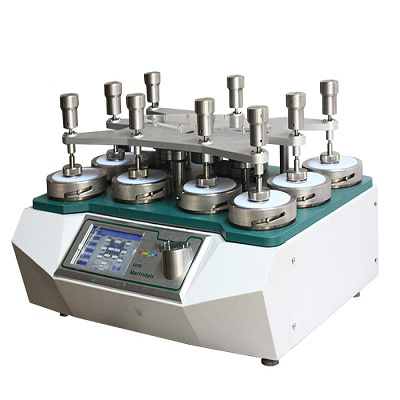The experimental method uses the Martindale Abrasion Tester to determine the anti-pilling resistance of textiles and other changes on the surface. This method is applicable to all textiles, especially woven fabrics.
This test method is not suitable for fabrics with a thickness of more than 3mm, because this kind of cloth clamp does not hold tightly.
The test sample can be before or after washing
This method uses SI as the standard unit. The units in parentheses are for reference only.
This standard does not involve the introduction of safety. But it is hoped that before operating this standard, some management documents related to safety and health should be established.

The fuzzing, pilling or other appearance changes that occur during wearing, such as fuzzing, can be simulated and measured by experimental instruments. The fabric is clamped on the Martindale tester. The front of the sample and the front of another fabric are in accordance with a certain The geometric figures rub against each other. The figure is a straight line at the beginning, then gradually becomes an ellipse, and finally a straight line in the opposite direction of the original straight line. The friction should be carried out under a slight pressure until the specified number of turns is reached. After this action, under standard visual conditions, the standard picture is generally compared with the original cloth to check the degree of pilling and other appearance changes. It is generally reported in terms of its anti-pilling ability.
sampling
Test samples: selection, quantity and preparation
Humidity
The sample shall be humidified for at least 4 hours in a standard environment with a temperature of 21 ± 1°C and a relative humidity of 65 ± 2%.
Prev: Martindale abrasion resistance tester leather shoe material abrasion resistance test
Next: ISO 12945-2:2000 Determination of surface pilling test with Martindale abrasion meter